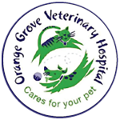Working in a veterinary practice, seeing and dealing with many pet owners daily it’s difficult not to notice how many pets are overweight or obese. What are the main reasons pets start to pack on the pounds?
1. Incorrect diet for activity level or life stage
2. Overfeeding
3. Lack of exercise
4. Combination of all of the above.
As in humans, being overweight can lead to a number of health problems and long terms risks in our pets.
- Health problems include:
- Respiratory problems
- Heat and exercise intolerance
- Hypertension (high blood pressure)
- Diabetes
- Liver & Kidney disease
- Joint problems (osteoarthritis)
- Increased cancer risk (malignant tumors)
- Lowered life expectancy (up to 2.5 years)
Understanding pet obesity and striving towards a healthy lifestyle for our pets.
Dogs and cats don’t put on weight overnight. It is a process that takes weeks, months, even years. With that said pet weight loss is not a quick fix and takes dedication on the part of the owner to help their pet shed those extra pounds.
Step One – Check if your pet is overweight.
This can initially be done by the owner and then by a trained veterinary professional. A simple test to check is to look at your dog or cat from above – can you see an hourglass figure or tuck in the waistline just after the abdomen? If you can, great! If you can’t or are not sure then gently feel along your pet’s abdomen – can you feel the ribs? If you are having difficulty seeing a waistline or feeling the ribs, your pet is most likely overweight.
Step Two – Weight Assessment
Take your pet to your veterinarian and have him or her weighed and assessed. Your vet will be able to determine how overweight/obese your pet is and how much it needs to lose to reach its ideal body condition.
Step Three – Put your pet on a weight loss programme.
Your vet will likely suggest a weight loss programme & a new diet. The type of diet recommended will likely be one that is specifically developed for weight loss and available from your veterinarian or vet store only.
Step four – stick to the programme & exercise
It is important to stick to the recommended feeding allowance and to be strict with any additional treats you give your pet. It is difficult as pet owners not to want to feed more or give an extra treat or two but if you want your pet to lose weight and live a healthier lifestyle you have to stick to the programme!
Visit your vet every 10 – 14 days for a weigh-in and to check you are on track with your weight loss. As with humans increased exercise will increase the rate of weight loss and improve your pet’s fitness and well-being. In dogs, you can take them for walks (short at 1st but longer distance as they get fitter) and in cats, you can play more with them.
Step Five – Weight Maintenance
Even before your pet has reached his or her ideal weight, you will notice a difference in its activity level, health and overall demeanor. The importance once you have reached the target is to maintain it and not slip back into bad habits. Recommended diet foods usually indicate on feeding instructions the daily amount for weight loss and for weight maintenance. Look at the instructions for your pet’s current weight and the amount of food required for weight maintenance.





